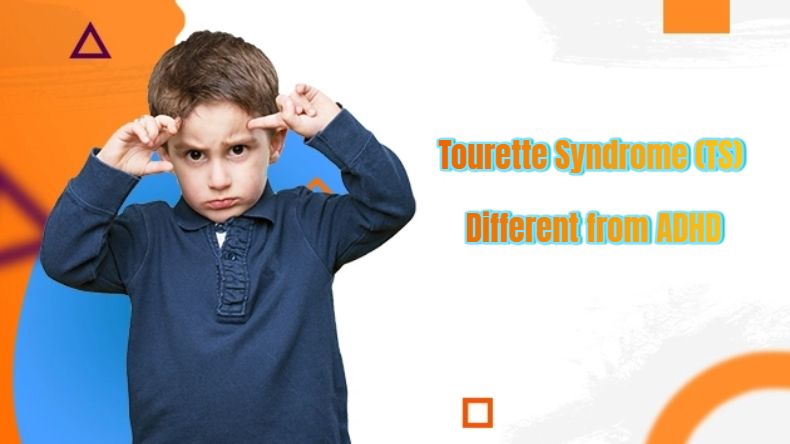
Persistent Eye Blinking, Nose Sniffing, or Facial Tics in Children: A Critical Signal Not to Ignore!
Tourette Syndrome (TS) is primarily characterized by the presence of both motor and vocal tics (sudden, rapid, repetitive, non-rhythmic movements or sounds), whereas ADHD is defined by persistent patterns of inattention, hyperactivity, and impulsivity that interfere with functioning or development.

This article discusses Tic Disorders. For many readers, this may be the first encounter with the term. More critically, due to widespread lack of awareness, many parents find themselves helplessly watching their child's symptoms multiply and intensify, often only recognizing the impact on learning and daily life when it becomes significant. Alternatively, initial diagnosis can trigger undue anxiety and fear due to misunderstanding, potentially hindering the child's recovery process.
What is a Tic Disorder?
Tic Disorder, also known as Tourette Syndrome (TS), is medically defined as a neurodevelopmental disorder. It arises from miscommunication within the brain's signaling pathways, leading to involuntary movements or sounds. These may include eye blinking, grimacing, nose twitching, mouth movements, shoulder shrugging, neck jerking, head nodding, or body twisting. Symptoms often begin with eye-related tics before progressing to involve the nose, mouth, shoulders, and other areas.
The precise cause remains unknown, though medical research suggests potential links to genetic predisposition, infections, biochemical imbalances, immune factors, and psychosocial stressors. Tic disorders are relatively common, affecting an estimated 1% to 7% of children, with a male-to-female ratio ranging from 3:1 to 4:1. This translates to a notably high prevalence among boys.
Symptom Nature:
The symptoms of TS are involuntary tics, which can be temporarily suppressed but often result in increased internal tension. The symptoms of ADHD involve difficulties with voluntary behavioral regulation, specifically in sustaining attention, controlling activity levels, and inhibiting impulsive responses.
Diagnostic Focus:
A diagnosis of TS requires the chronic presence of multiple motor tics and at least one vocal tic, not due to another medical condition or substance use. A diagnosis of ADHD requires meeting specific criteria for significant inattention and/or hyperactivity-impulsivity across multiple settings.
Underlying Mechanisms (Simplified):
TS is classified as a Tic Disorder, believed to involve dysregulation in brain circuits related to motor control and inhibition (e.g., basal ganglia, cortex). ADHD is classified as a Neurodevelopmental Disorder primarily associated with dysregulation in brain networks governing executive function, attention, and reward processing (e.g., prefrontal cortex, striatum).
Key Distinction Summary:
The fundamental distinction lies in the nature of the core symptoms: TS involves involuntary tics (movements/sounds), while ADHD involves dysregulation in attention, activity control, and impulse control.
Co-occurrence Note:
It is important to note that TS and ADHD frequently co-occur; a significant proportion of individuals with TS also meet the criteria for ADHD. However, they are distinct diagnoses with different primary symptom clusters.
What Can We Do?
Evidence from medical consultation platforms and online case studies indicates that severe symptoms can significantly impact a child's school life and learning post-school age. Challenges include social stigmatization, classroom disruptions affecting teachers and peers, and in some cases, even requiring temporary leave from school.
Conversely, many reports suggest that as children mature, symptoms often naturally diminish or even resolve completely, sometimes without extensive intervention.
Literature on the subject emphasizes:
-
"The body serves as the bridge between the internal and external worlds. When environmental demands overwhelm a child's still-developing internal coping mechanisms, the resulting conflict and dysregulation can manifest physically as tic disorders".
-
"Children with a genetic susceptibility to tics may develop the disorder when exposed to adverse environmental conditions that exceed their nervous system's tolerance or disrupt internal equilibrium".
-
"The most powerful support for a child with tics is parental acceptance. Love is the best medicine, complemented by strengthening physical health through exercise and fostering psychological resilience through supportive counseling and mental well-being development".
Fundamentally, this reflects a child's current physical and psychological capacity being insufficient to buffer against external stressors, lacking the necessary resilience and flexibility.
Therefore, the cornerstone of management involves physical exercise, psychological counseling, and mental resilience building. Empowering the child physically and mentally is key to developing their own capacity to withstand external pressures.
Key Recommendations:
-
Maintain Perspective While Addressing Specifics: Avoid excessive focus on the tics themselves and treat the child normally. However, pay increased attention to their foundational health: ensure robust nutrition, adequate sleep, and a supportive upbringing.
-
Build Physical and Mental Resilience: Regular exercise is paramount. It not only strengthens the body but also effectively channels emotional tension and alleviates psychological stress. Complement this with mindful parenting – offering understanding, love, and continuous personal growth as a caregiver. Parenting is a journey of learning for us all.
Final Considerations:
The majority of children with tic disorders experience relatively mild symptoms, typically emerging in the preschool years. Severe presentations or onset during school years are less common.
If your child exhibits significant symptoms, consulting more than one specialist is advisable. Diagnostic approaches and treatment recommendations for neurological conditions like tics can vary among clinicians.
Should multiple specialists concur on a treatment plan, including medication if deemed necessary, follow their guidance conscientiously. While medication can be a valuable tool, it is not a universal solution (particularly neurological medications). Remember, the foundation of care remains unconditional love, understanding, high-quality parent-child engagement, and outdoor activities.
Perhaps we can interpret a child's tics as an instinctive bodily signal, a plea: "Mom and Dad, I need you to truly 'see' me!"